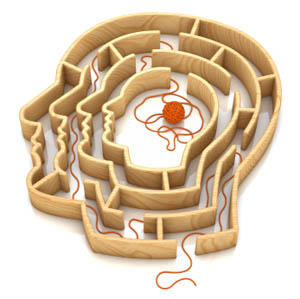
Rethinking Physical Activity for ADHD
 Even now, there’s not much known about the chain of events that results in the symptoms indicative of Attention Deficit Hyperactivity Disorder (ADHD). Excessive impulsivity, chronic inattention and inability to remain still are the trademark symptoms first noticed by parents and teachers.
Even now, there’s not much known about the chain of events that results in the symptoms indicative of Attention Deficit Hyperactivity Disorder (ADHD). Excessive impulsivity, chronic inattention and inability to remain still are the trademark symptoms first noticed by parents and teachers.
Thankfully, more and more research now suggests that it might be related to a deficiency in the production of dopamine, a chemical in the brain that helps regulate behavior, mood, and controlled movement.
In the treatment of ADHD doctors currently tend to prescribe stimulant medication such as Ritalin because it has been shown to increase the availability of dopamine in the brain.
However effective stimulants carry risks that are unavoidable. Many parents are left wondering if a natural alternative to chemically increasing concentration and attention span actually exists.
This topic is certainly controversial since most medical experts agree that there is no “cure” for ADHD and that the condition requires sustained management. While medications can be used to control symptoms and learned techniques can improve attention, most patients with ADHD continue to exhibit signs of the illness even later in life.
A number of experts have lately begun looking at something rather new called “Brain Exercise Therapy” (BET). The therapy is comprised of mental and physical workouts that they claim build brain mass and neural pathways.
It seems quite promising that, given the brain’s plasticity, engaging in activities that require new skills and problem solving allows patients to stimulate neuron growth. The connections that are created in areas of the brain that are deficient in neurotransmitters, advance overall brain function and heal specific deficits in the ADHD brain.
We all know adults who are successful in the relationships and careers, but their lives are very disorganized. There’s no clear direction or consistency to their daily lives.
Dr. Gimpel, a board-certified psychiatrist, neurologist and director of the Brain Power Clinic in Jerusalem agrees that any activity that requires new, challenging ways of thinking can help this type of chronic disorganization.
BET games such as juggling and chess are essential for teaching strategy, memory, and planning skills.
Dr. Gimpel uses an effective analogy to explain what games can do for your brain.
“In each brain cell, we have a little fuel tank, much like in a car”, he says. “The trouble with ADHD patient is that this tank of fuel has holes, so you don’t have enough fuel to allow for effective stimulation between brain cells. When you do these activities, you are creating new cells and with each one comes more fuel.”
However, it is important to remember that much like one visit to the gym won’t build muscle mass, these changes in the brain do not normally occur until after 50 to 70 hours of BET. Fortunately, many of these activities are fun for everyone, not just those with ADHD and the whole family can and should participate.
References:
Health.com, “Brain Games and Exercise: A Drug-Free Treatment for ADHD?” http://www.health.com/health/condition-article/0,,20252861,00.html Accessed November 11, 2011
